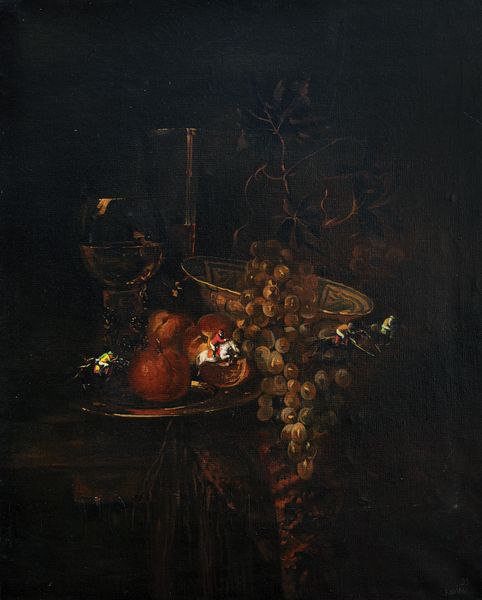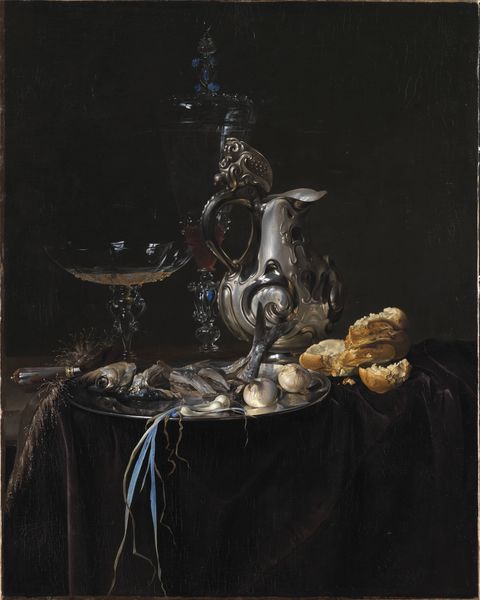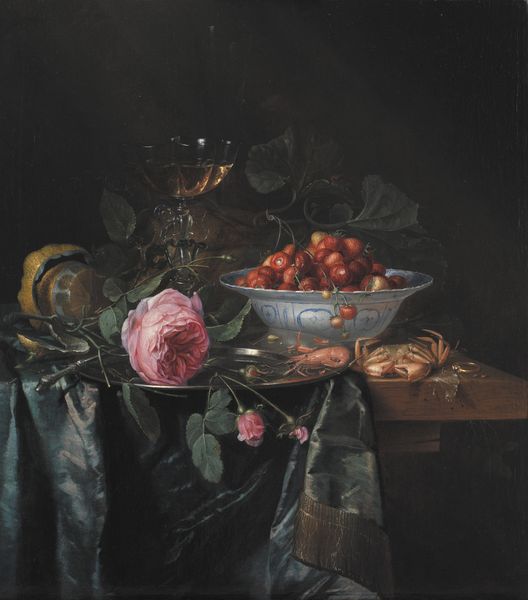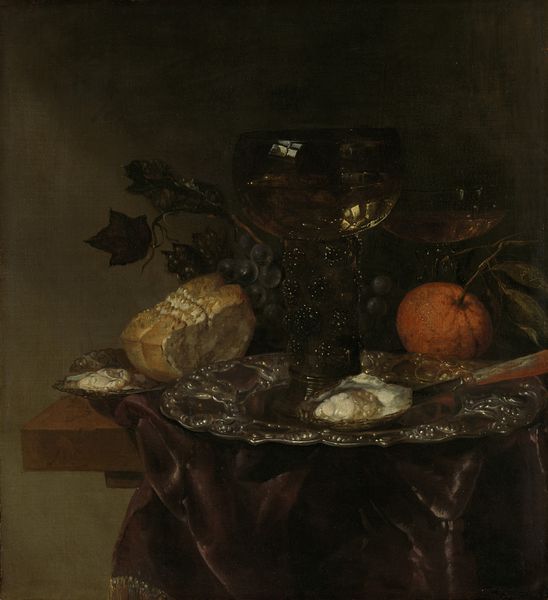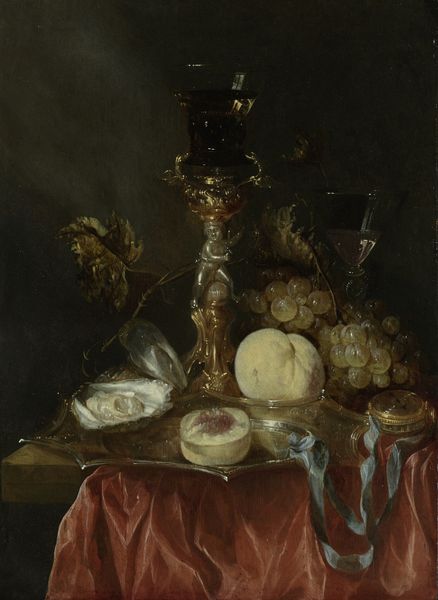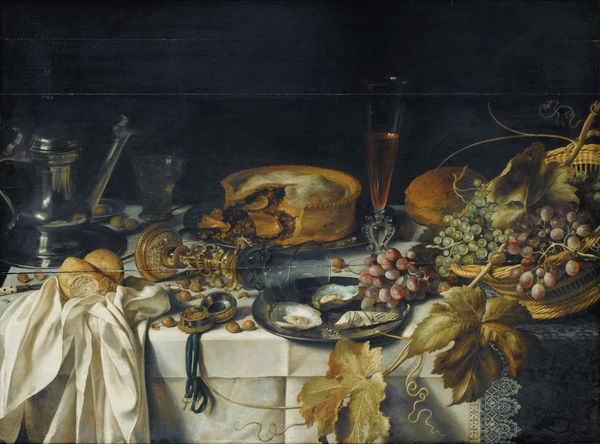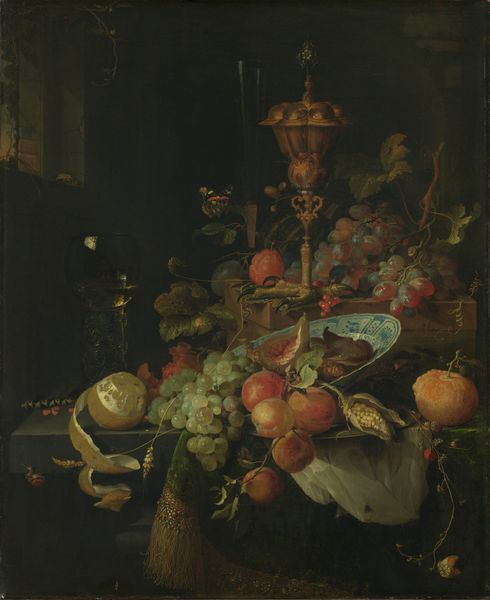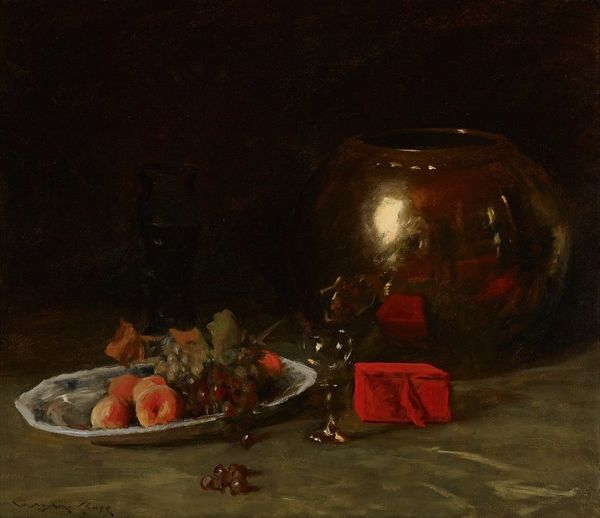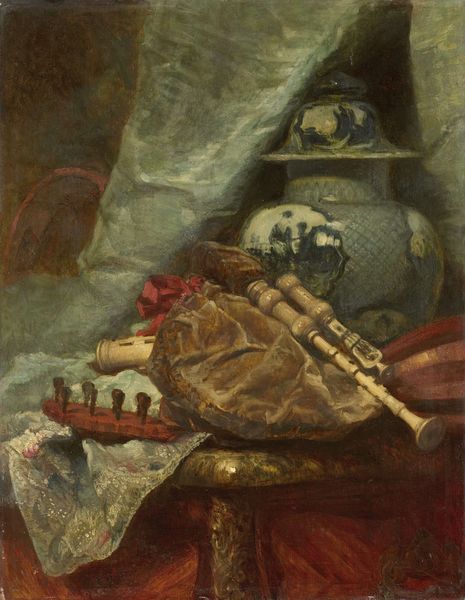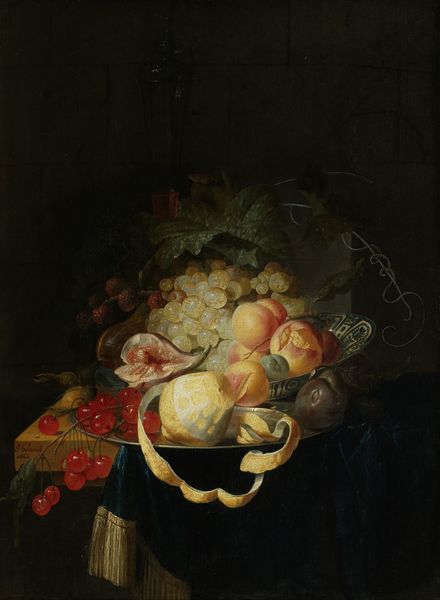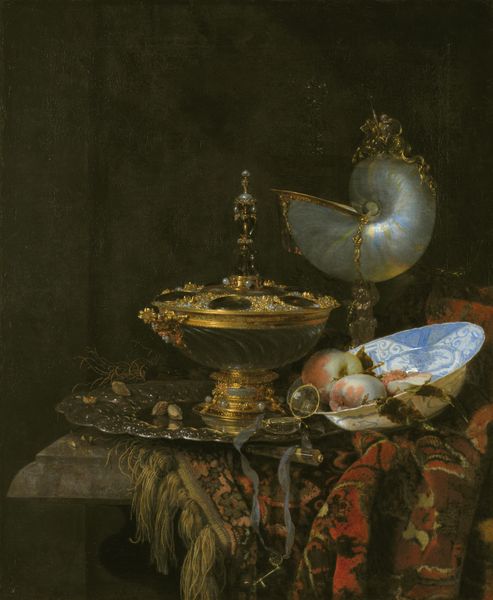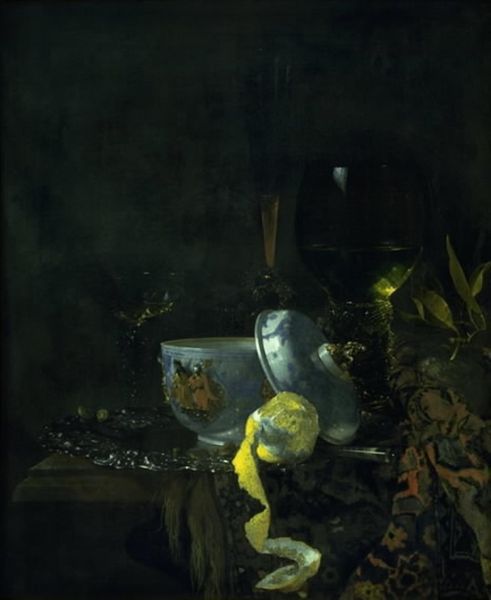
Copyright: Dmytro Kavsan,Fair Use
Curator: Here we have Dmytro Kavsan's "Still Life #4" from 1993. Kavsan, working in post-Soviet Ukraine, presents what initially appears to be a traditional still life in the baroque style. Editor: My first impression is drama, but not necessarily life. The darkness is engulfing. It feels like light is struggling to break through and reveal the objects arranged across that surface. Curator: Absolutely. While seemingly referencing Dutch Golden Age vanitas paintings, this work presents a distinct commentary on post-Soviet Ukrainian identity. The inclusion of animal figurines, rather than traditional objects of wealth, becomes a poignant statement on the shifting values and material realities. Editor: That's fascinating. The figurines disrupt the classic reading, absolutely. The composition itself is a clear play with light and shadow. Note how the artist manipulates textures, from the glossy surface of the vessels to the dull fabric draped on the table, to create a sense of depth. Curator: Right, but consider what that depth implies in this context. Vanitas paintings often functioned as memento mori for the wealthy, reminders of mortality amid opulence. Here, Kavsan replaces symbols of wealth with figurines, almost childlike in their vulnerability, forcing us to consider the mortality of a nation, its values and its systems, rather than of an individual. It brings up complicated questions about the post-Soviet period, especially its sense of loss. Editor: I see that. Looking closer, I am noticing more symbolism. Even the arrangement, that precarious balancing act, seems carefully calculated to evoke a feeling of fragility and ephemerality. The decay, hinted at by what might be overripe fruit, pushes the conversation about time. Curator: Kavsan does a fantastic job in repurposing old themes with modern meanings, reflecting cultural trauma. Through "Still Life #4," Kavsan compels us to examine the narratives we construct around ourselves, individually and collectively. Editor: Indeed. The composition, light, and shadow aren't simply aesthetic choices, they communicate profound shifts in values and the search for meaning in a changed reality. Curator: An artistic statement relevant even today. Editor: Yes. It challenges our notions of what a "still life" can signify.
Comments
No comments
Be the first to comment and join the conversation on the ultimate creative platform.
